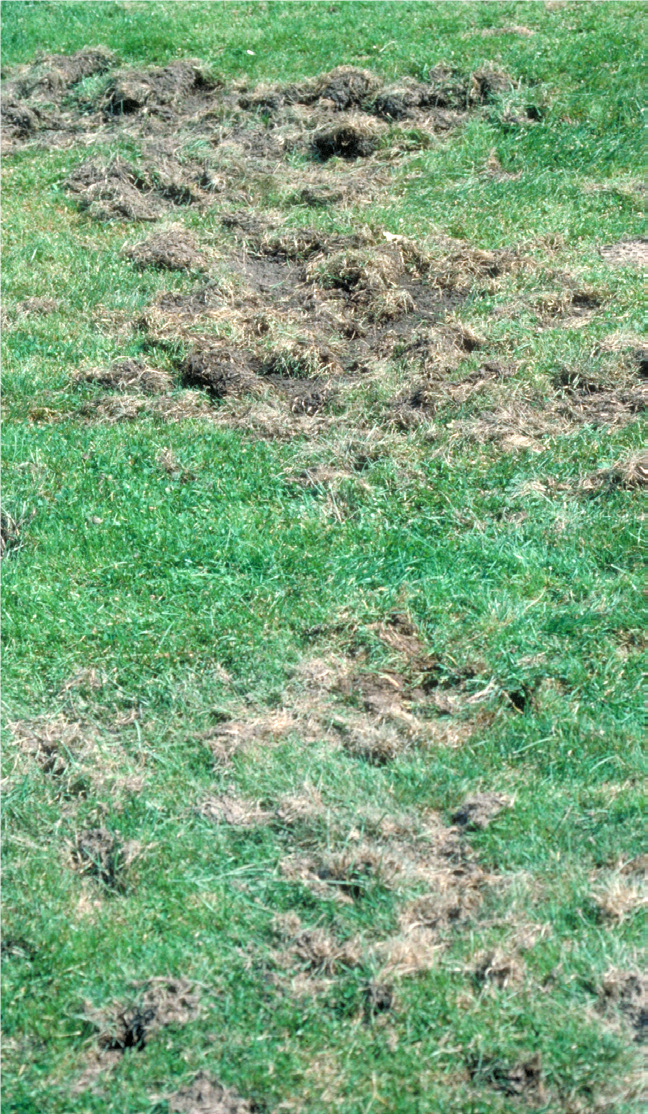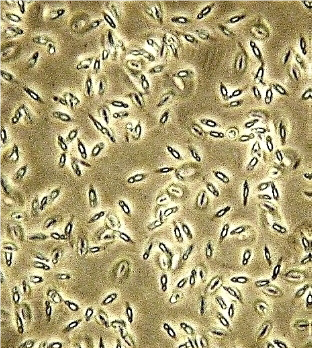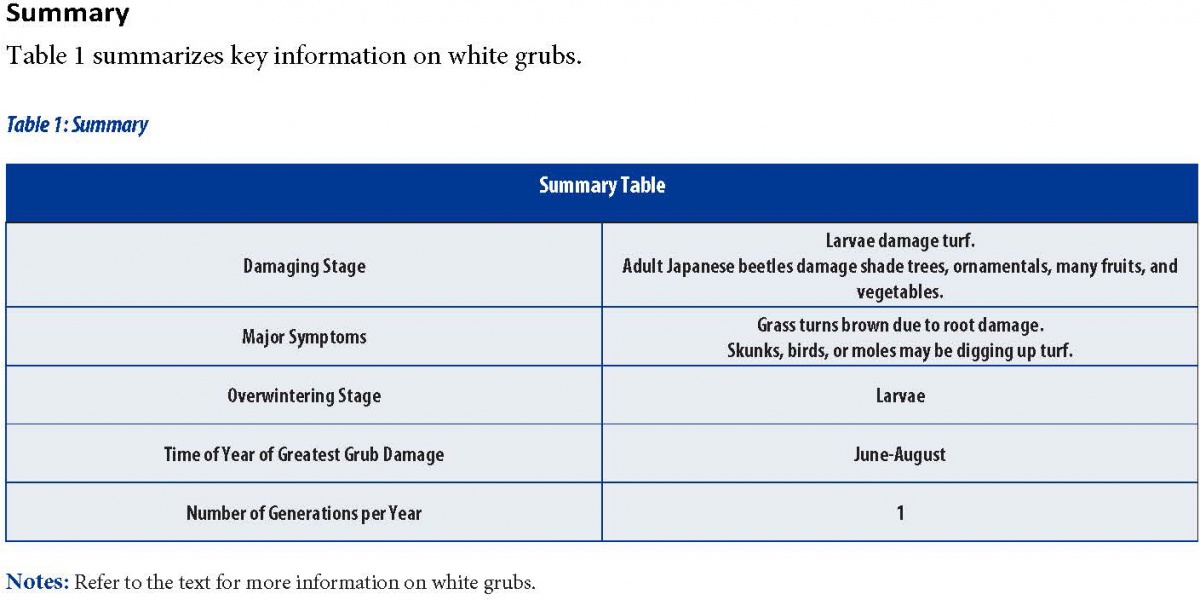White grubs are the larval or grub stage of several species of beetles and chafers. The two most troublesome species in New Hampshire are the European chafer (Rhizotrogus majalis)and the Japanese beetle (Popillia japonica). These beetle larvae are usually C-shaped and can be found feeding among grass roots. They are typically cream-colored with a brown head. They also have a dark area at their posterior end; this dark area actually is their body contents showing through their skin. White grubs feed on grass roots and most complete their development in one year.

chafer (right). Credit: D. Cappaert, Bugwood.org.
Description
European Chafer: The European chafer adult is a small golden tan to light brown beetle, oval in shape, about 1/2" long. The grub is about 3/4" long, grayish white with a brown head and six legs. The European Chafer grubs are distinguished from other white grubs by the "Y"-shaped anal slit and by the parallel rows of spines on their raster.
Japanese Beetle: The adult Japanese beetle is about 1/2" long with a shiny, metallic-green head and body. The grubs are usually small with light brown heads. The rastral pattern on the grubs forms a V (the raster is on the last segment of the grub and is formed of hairs).
Life Cycle
European chafers lay their eggs in late June; Japanese beetles in July and August. The eggs hatch and the young grubs begin feeding on grass roots within one to two weeks. Dry soils in July and August cause many eggs to die from moisture stress. Grubs feed until fall and then burrow deep into the ground to overwinter.
In spring, grubs burrow upwards to grass roots, resume feeding until late May, and then transform into pupae. Adult Japanese beetles emerge around the first week of July; European chafers about two weeks earlier.
Evidence of an infestation of white grubs appears as grass begins to turn brown due to root damage. Usually the turf can be rolled back like a rug to reveal grubs. Mole or skunk damage indicates the presence of grubs.

USDA Agricultural Research Service, Bugwood.org.
Management
IPM Strategies:
- Cultural Practices - Healthy lawns cut at 2" or higher can tolerate a lot of insect feeding without showing injury. Lawn pests do not have to be controlled every year unless damage is visible or significant.
- Monitoring - Proper monitoring and identification is be important in preventing turf losses. To confirm a grub infestation, get a shovel, sift through the top 3" of soil, roots, and thatch. Look for creamy-white, C-shaped beetle larvae, with tan to rusty-brown heads and six legs. After examining the soil, replace the grass and water it. It is normal to find an occasional grub and is not cause for alarm. Healthy turf can usually outgrow the root loss caused by a couple of grubs. Damage thresholds vary depending on the grub species and quality of the turf.
- Biological Control - There are a number of predators and parasitoids that attack white grubs, but unfortunately their effectiveness for control is unknown. There are also two biological control agents that are available: milky spore and parasitic nematodes. The biological agent that causes milky spore disease only controls the Japanese beetle. Be warned that research findings indicate that the milky spore bacterium is not effective in northern New England because spring soils are too cold. The parasitic nematode can suppress white grub populations, but requires moist soil conditions and also has shown minimum survival in New Hampshire soils because of the extreme temperature fluctuations.
- Chemical Control - Chemical controls and the timing of application vary with the different species of grubs. As a general rule, apply preventive controls from April to mid-July and curative controls from late July through August.
Consult your county Extension Field Specialist for specific recommendations.

Bugwood.org.
Stop! Read the label on every pesticide container each time before using the material. Pesticides must be applied only as directed on the label to be in compliance with the law. All pesticides listed in this publication are contingent upon continued registration. Contact the Division of Pesticide Control at (603) 271-3550 to check registration status. Dispose of empty containers safely, according to New Hampshire regulations.
Download the resource for the complete factsheet.

